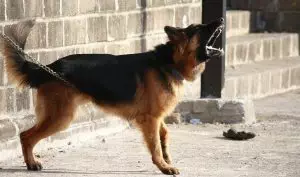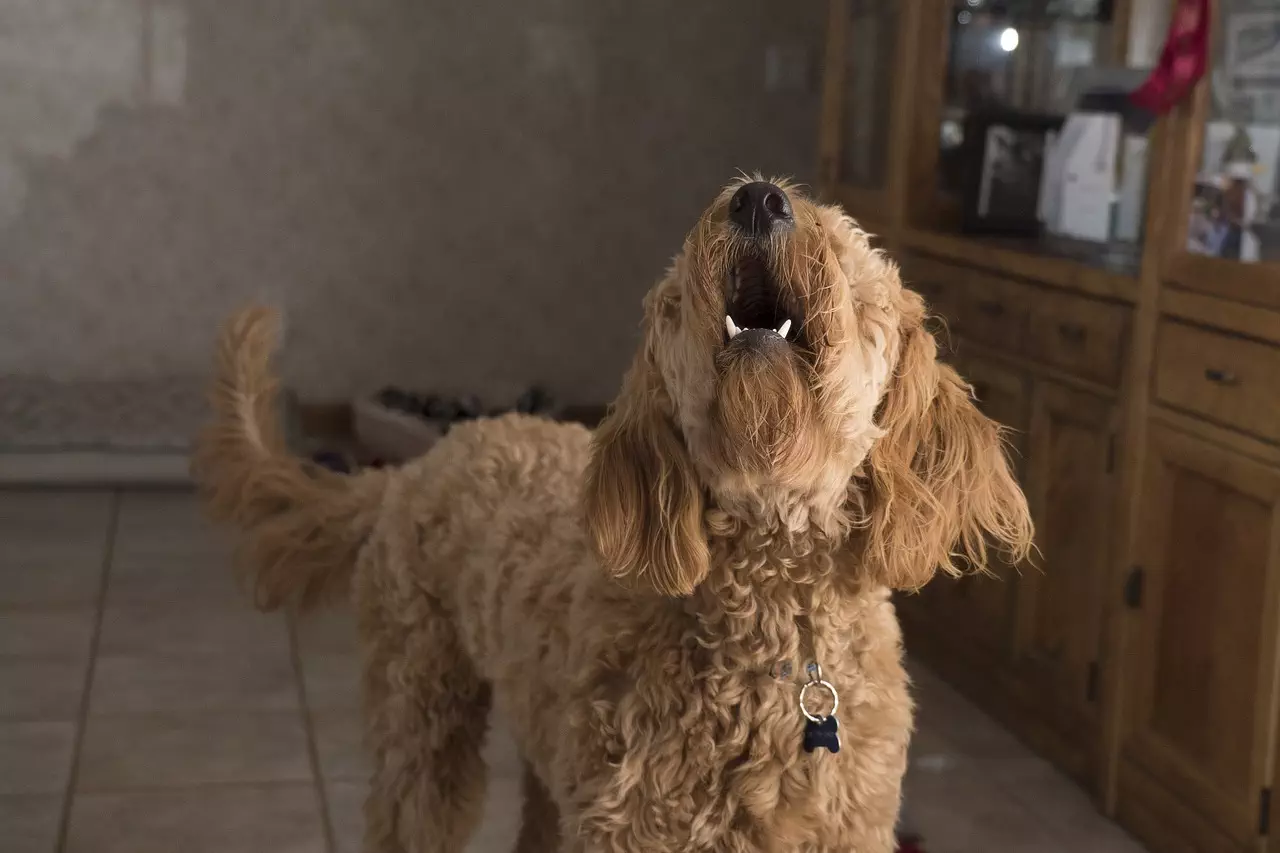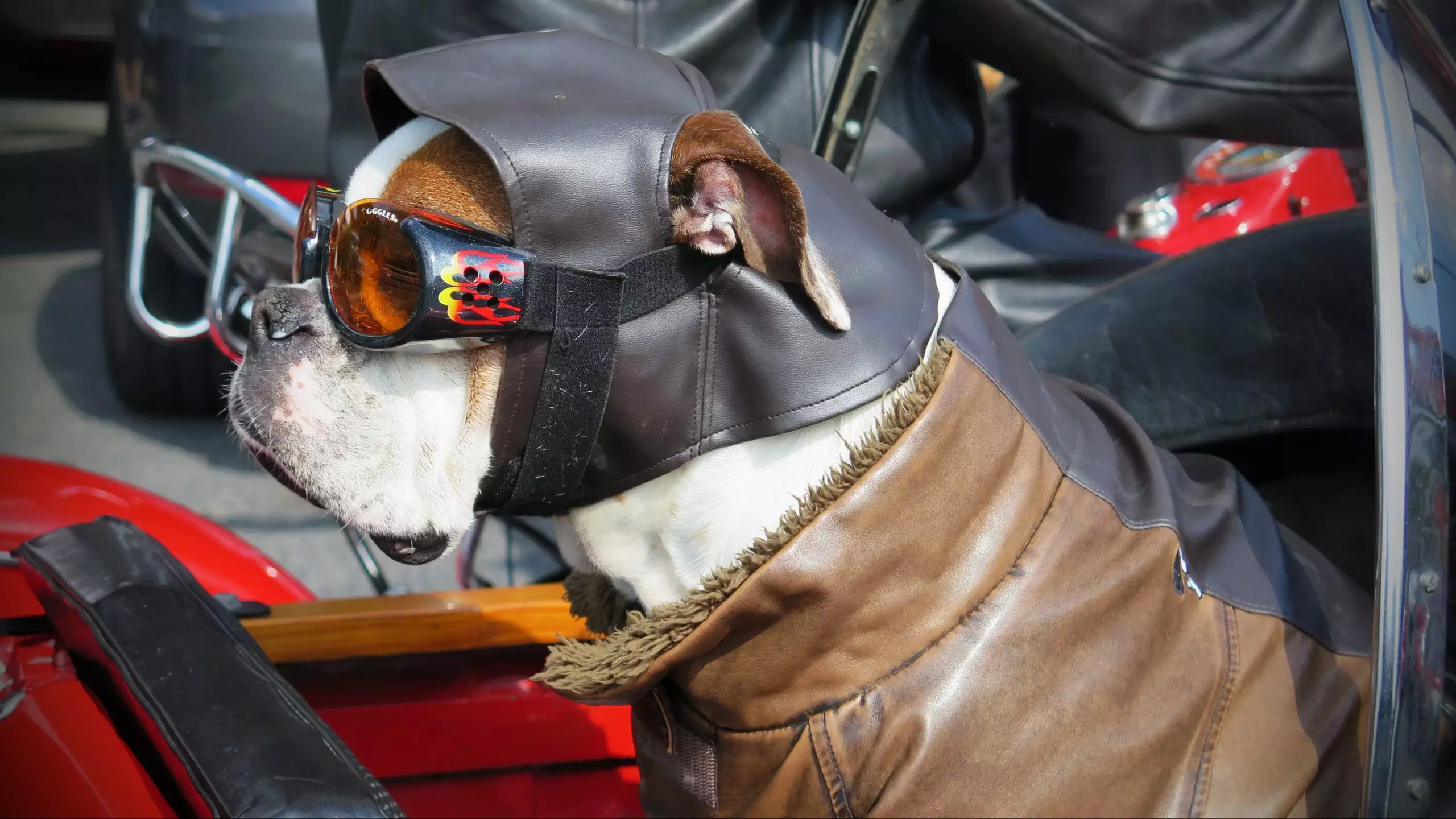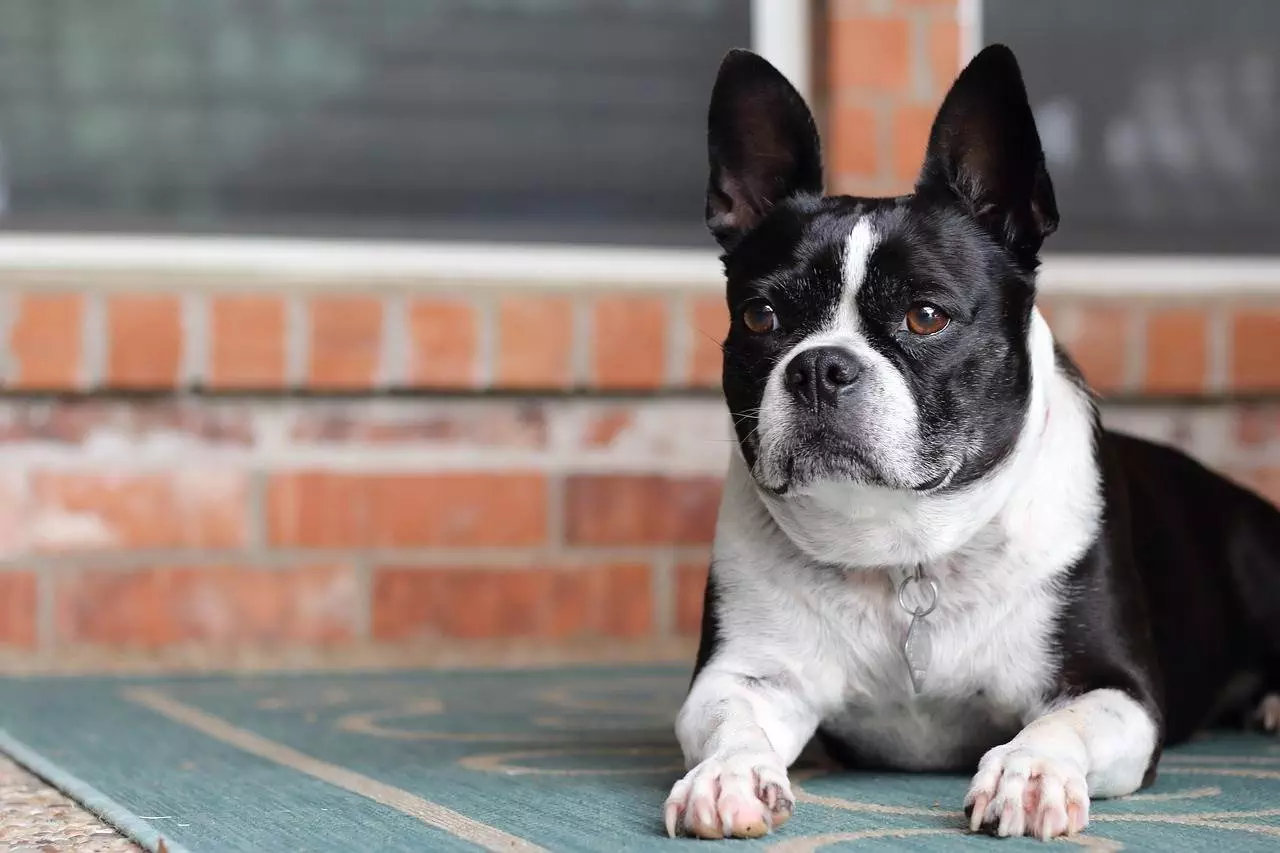Separation Anxiety in Dogs
Separation anxiety is one of the most common behavioral issues in dogs. It occurs when a dog becomes overly attached to its owner and experiences severe distress when left alone. Symptoms can include excessive barking or whining, destructive behavior, and even self-harm. Unfortunately, separation anxiety is not always easy to spot, as some dogs may show no signs of distress until their owner leaves. Fortunately, there are steps you can take to prevent separation anxiety in your dog. First and foremost, it’s important to establish a routine that will help your dog feel more secure when you’re not around. This might include regular feeding times and exercise sessions that coincide with your work schedule. Additionally, you can train your dog to associate positive experiences with being alone by gradually increasing the amount of time they spend away from you.
Overview

Separation anxiety is a common problem among dogs. It is characterized by excessive barking, destructive behavior, and other unwanted behaviors that occur when the dog is left alone. This condition can be stressful for both the dog and the owner, making it important to address as soon as possible. One way to prevent separation anxiety in dogs is through gradual desensitization. This involves gradually increasing the amount of time your dog spends alone until they are comfortable being on their own for extended periods of time. Start with short intervals, such as leaving your dog alone for five minutes at a time, and gradually increase this over several weeks or months.Another way to prevent separation anxiety in dogs is through positive reinforcement training. This involves rewarding your dog for calm behavior while you are away.
What is Separation Anxiety?
Separation anxiety is a common disorder in dogs that can cause distress for both the animal and its owner. This condition occurs when a dog becomes anxious or panicked when left alone or separated from their owners. Symptoms of separation anxiety include excessive barking, chewing, scratching, digging or other destructive behaviors, as well as urinating and defecating inside the house. If you are getting a new puppy or have just adopted an adult dog, it’s important to start training them early to prevent separation anxiety. One way to do this is by gradually increasing the amount of time your pet spends alone each day. You could also provide toys and treats that can keep your pup occupied while you’re away so they won’t feel bored or lonely.Additionally, creating a calm and safe environment for your furry friend can help alleviate separation anxiety symptoms.
Causes of Separation Anxiety
Separation anxiety is a common issue among dogs and can cause them to become destructive or even develop health problems. Understanding the root causes of separation anxiety is crucial in preventing it from occurring in your furry friend. One of the leading causes of separation anxiety in dogs is a lack of socialization during their developmental stages. Puppies that are not exposed to different environments, people, and animals may become fearful when left alone. Another factor that contributes to separation anxiety in dogs is a sudden change in routine or environment. For instance, moving to a new home or experiencing the loss of a family member can trigger feelings of stress and anxiety for your dog. Additionally, some breeds are more prone to separation anxiety than others due to their inherent attachment tendencies towards their owners.Fortunately, there are steps you can take to prevent separation anxiety in your canine companion.
Causes of Separation Anxiety
Separation anxiety in dogs is the fear or distress that a dog experiences when separated from its owners. It can manifest itself in various ways, such as barking, howling, destructive behavior, and urinating or defecating inside the house. Separation anxiety is a common problem among dogs of all breeds and ages, and it can be caused by several factors. One of the primary causes of separation anxiety in dogs is lack of socialization during their early years. Puppies need to be exposed to different people, animals, and environments to learn how to adapt to new situations. Dogs that were not adequately socialized may become anxious when left alone because they are afraid of being abandoned or isolated.Another cause of separation anxiety in dogs is a traumatic event that occurred while their owners were away.
Signs of Separation Anxiety
Separation anxiety in dogs is a common issue that many pet owners face. It can be heartbreaking to see your furry friend suffer when you leave the house, but there are signs to look out for that indicate separation anxiety. These signs include excessive barking or howling, destructive behavior, attempting to escape from the home or yard, and even self-injury. Luckily, there are steps you can take to prevent separation anxiety in dogs. One of the most important is ensuring that your dog gets plenty of exercise and mental stimulation throughout the day. This can include going on walks, playing fetch or other interactive games, training sessions, and providing puzzle toys filled with treats for them to work on while you’re away.Another key way to prevent separation anxiety is by gradually acclimating your dog to being alone. Start by leaving them alone for short periods of time and gradually increasing the duration over time.
Signs of Separation Anxiety
Separation anxiety is a common behavioral issue among dogs that can be distressing for both the owner and the pet. It occurs when a dog becomes anxious or stressed when left alone or separated from their owners. There are some signs to look out for if you suspect your furry friend may be experiencing separation anxiety. One of the most common signs of separation anxiety is excessive barking and whining when left alone. Your dog may also chew on furniture, scratch doors, or dig at carpets in an attempt to escape and find their way back to you. In severe cases, they may even try to break through windows or doors. Other signs include urinating or defecating indoors despite being house-trained, loss of appetite, restlessness, and depression.Fortunately, there are ways to prevent separation anxiety in dogs.
Solutions to Prevent Separation Anxiety
Separation anxiety in dogs is a common problem that can lead to destructive and stressful behavior for both the dog and the owner. Fortunately, there are several solutions available to help prevent separation anxiety in dogs. Firstly, it’s important to gradually accustom your dog to being alone. Start by leaving your dog alone for short periods of time, then gradually increase the duration as they become more comfortable with being apart from you. Additionally, provide plenty of exercise and mental stimulation before leaving so that they are tired and less likely to become anxious.Another solution is to create a calming environment for your dog while you’re away. This can include playing soothing music or leaving an item with your scent on it such as a piece of clothing or blanket. You may also want to consider investing in some interactive toys or puzzles that will keep them occupied while you’re gone.
Treating Separation Anxiety
Separation anxiety is a common problem that many dog owners face. This condition can manifest in different ways such as excessive barking, destructive behavior, and even self-harm. Fortunately, there are several ways to prevent separation anxiety in dogs. The first step is to make sure that your dog gets enough exercise and mental stimulation. A tired and mentally-engaged dog is less likely to experience separation anxiety than one who is bored or restless. Try taking your dog for long walks or playing games that require mental stimulation like puzzle toys.Another way to prevent separation anxiety in dogs is by gradually desensitizing them to being alone. Start by leaving your dog alone for short periods of time and gradually increase the duration over time. You can also try leaving your dog with a special toy or treat when you leave so they associate your absence with something positive rather than negative.
Exercise & Mental Stimulation
Exercise and mental stimulation are two crucial factors that can help prevent separation anxiety in dogs. When left alone for extended periods, many dogs suffer from separation anxiety which can lead to destructive behavior, excessive barking or howling, and even self-harm. However, regular exercise and mental stimulation can help keep your furry friend calm and happy when you’re away. One of the best ways to provide physical exercise for your dog is through daily walks or jogs. These activities not only benefit their physical health but also allow them to explore their surroundings and interact with other dogs and people. Additionally, playing fetch or tug-of-war with your pooch can release pent-up energy that might otherwise be directed towards destructive behaviors.Mental stimulation is equally important as physical exercise when it comes to preventing separation anxiety in dogs.
Prevention Strategies
As dog owners, we all want our furry friends to be happy and healthy. However, sometimes our dogs can develop separation anxiety which can cause distress for both the pet and the owner. Separation anxiety is a common problem in dogs that can manifest in various ways such as excessive barking, destructive behavior or even urinating inside the house. If you have a dog that experiences separation anxiety, do not worry; there are several strategies that you can use to prevent this issue. Firstly, it is essential to make your departure and arrival low-key events. This means avoiding any over-the-top greetings when you come home or long goodbyes when leaving for work. By doing this, your dog will be less likely to become anxious when you leave because they won’t associate these events with stress or excitement.
Ample Environment Enrichment
As a dog owner, it can be heartbreaking to leave your furry friend at home while you go about your day. Unfortunately, this can lead to separation anxiety in dogs, causing them to become stressed and anxious when left alone. However, there are steps you can take to prevent this from happening – one of which is providing ample environment enrichment. Firstly, ensure that your dog has plenty of toys and activities to keep them occupied while you’re away. Puzzle toys or treat-dispensing toys are great options as they provide mental stimulation as well as physical exercise. You could also consider leaving the radio or TV on for background noise – this can help ease their anxiety by making them feel less alone.Another way to enrich your dog’s environment is through training and socialization.
Regular Exercise and Stimulation
Dogs are social animals, and it’s not uncommon for them to experience separation anxiety when left alone. Separation anxiety can manifest in destructive behaviors like chewing, digging, barking or howling excessively. This condition is distressing for both the dog and their owner. However, there are several ways that pet owners can prevent separation anxiety in dogs. One of the most effective ways to prevent separation anxiety is through regular exercise and stimulation. Dogs need physical activities like running, walking or playing fetch to help release energy and reduce stress levels. Taking your dog for a walk before you leave can help calm them down and create a positive association with your departure. Additionally, leaving interactive toys or puzzles out for your dog to play with while you’re gone can also keep them occupied and mentally stimulated.Another way to prevent separation anxiety is by gradually introducing your dog to being alone.
Positive Association with Being Alone
As a dog owner, you may have noticed that your furry friend doesn’t like being alone. Separation anxiety is a common issue among dogs and can lead to destructive behavior, excessive barking, and even depression. However, it’s important to note that being alone isn’t always a bad thing for dogs. In fact, there are ways to create positive associations with solitude that can help prevent separation anxiety. The first step in preventing separation anxiety is to gradually teach your dog to be comfortable with alone time. Start by leaving them alone for short periods of time while providing toys or treats that they enjoy. As they become more comfortable with brief absences, gradually increase the amount of time you spend away from home.Another way to create positive associations with being alone is through environmental enrichment. This includes providing your dog with activities and toys that stimulate their senses and keep them mentally engaged while you’re away.
Conclusion: Managing Separation Anxiety
Separation anxiety is a common problem in dogs that can be distressing for both the pet and their owners. It can manifest in various ways, from excessive barking to destructive behavior, and it’s important to address it as soon as possible. Fortunately, there are several strategies you can use to prevent separation anxiety in your dog. Firstly, start by gradually getting your dog used to being alone for short periods of time. You can do this by leaving them alone in a separate room while you’re still at home or going out for brief errands. Over time, increase the duration of absence so that they learn that being alone isn’t something to fear. Additionally, make sure your dog has plenty of activities when you’re not around. Toys that require mental stimulation or physical activity like puzzle feeders or chew toys will help keep them busy while you’re away.
Conclusion
Separation anxiety in dogs is a common problem that can affect both the dog and its owner. However, there are ways to prevent this issue from occurring in the first place. One of the most effective methods is to provide your dog with plenty of exercise and mental stimulation throughout the day. Additionally, it’s important to establish a routine for your dog so they know what to expect each day. This includes regular feeding times, walks, playtime, and nap times. You should also make sure your dog has a comfortable and safe space to relax in when you’re not home.Another helpful tip is to gradually desensitize your dog to being alone by leaving them alone for short periods of time at first, then gradually increasing the amount of time until they become more comfortable with being on their own.





